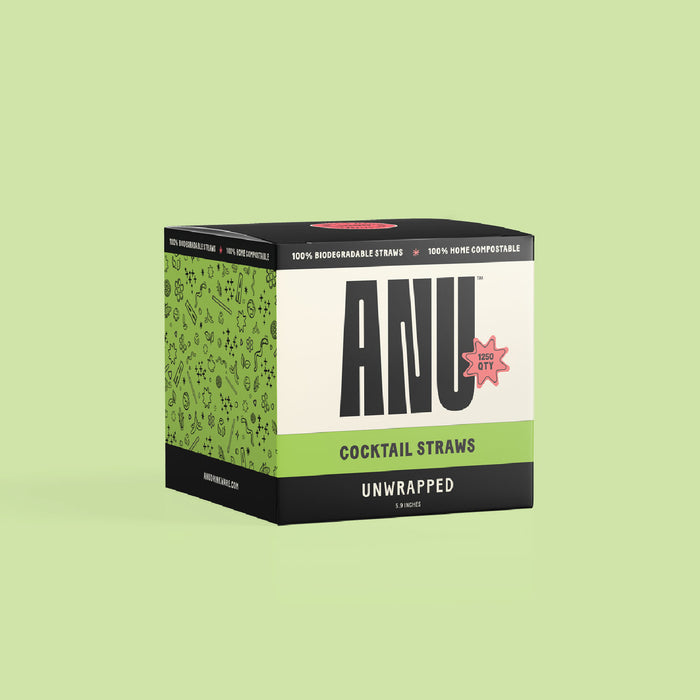

The Science Behind PHA for Sustainable Foodservice Packaging
Polyhydroxyalkanoate (PHA) has emerged as a game-changer in the world of sustainable foodservice packaging, offering a viable and eco-friendly alternative to traditional single-use plastics. As businesses and consumers look for ways to minimize their environmental impact, understanding the scientific advances and processes behind compostable materials like PHA is essential. In this article, we will dive deep into the science of PHA to explore why it stands out as a groundbreaking solution for sustainable straws and drinkware in the foodservice industry.
Derived from renewable resources and possessing unique biodegradable properties, PHA-based compostable cocktail straws and drinkware are transforming foodservice packaging by offering an environmentally responsible and practical choice. We will shed light on the production process, the biodegradation pathway of PHA, and its advantages over traditional plastics and other biodegradable alternatives.
By understanding the science behind PHA and its incredible potential for creating sustainable products, restaurants and bars can confidently embrace these innovative materials, contributing to waste reduction, environmental protection, and an improved ecological footprint. So, join us as we embark on a scientific journey to uncover the secrets of PHA and its profound impact on the world of sustainable foodservice packaging.
Understanding PHA: The Basics
Polyhydroxyalkanoates (PHAs) are a family of naturally occurring biopolymers produced by certain microorganisms, primarily bacteria, as an energy and carbon storage reserve. These biopolymers can be derived from various renewable resources such as plant oils, sugars, or even waste streams, making them an attractive and eco-friendly alternative to petroleum-based plastics.
PHA-based materials possess unique biodegradable properties, breaking down into water, carbon dioxide, and biomass upon exposure to microorganisms under controlled composting conditions. This effective biodegradation process significantly reduces the accumulation of waste in landfills and marine environments, addressing one of the most pressing concerns associated with traditional single-use plastics.
Production Process of PHA
The production of PHA typically involves the following steps:
- Microbial Fermentation: During this process, select microorganisms – such as bacteria – are fed with raw materials derived from renewable resources (e.g., plant oils or sugars). These microorganisms take up the carbon and convert it into PHA polymers as a reserve material for energy storage.
- Harvesting and Extraction: Once an optimal amount of PHA has been accumulated within the microorganisms, they are harvested, and the accumulated PHA is extracted using various methods such as solvent extraction or mechanical cell disruption.
- Processing and Purification: The extracted PHA is then purified and processed further to obtain different grades of the biopolymer that can be tailored to specific applications, such as compostable cocktail straws and drinkware for the foodservice industry.
Advantages of PHA Over Traditional Plastics and Other Biodegradable Alternatives
When compared to traditional plastics, as well as other biodegradable alternatives like PLA and cellulose-based materials, PHA offers several advantages:
- Biodegradability: As mentioned earlier, PHA breaks down into water, carbon dioxide, and biomass under controlled composting conditions, leaving no toxic residues behind. This contrasts with conventional plastics, which can take hundreds of years to degrade and contribute to pollution.
- Marine Degradability: One distinct advantage of PHA over other biopolymers is its degradation in marine environments. While other compostable materials may require industrial composting facilities to break down, PHA can degrade in various settings, including seawater, helping to combat the global issue of marine plastic pollution.
- Heat Resistance: PHA-based materials typically possess higher heat resistance compared to PLA, which is crucial for applications like hot drinkware and food packaging. This makes PHA an ideal choice for compostable dishes, cups, and cutlery that are both eco-friendly and practical for use in the foodservice industry.
- Versatility and Customizability: Depending on the specific type of PHA polymer and the production process, the resulting material can exhibit a diverse range of physical properties, such as flexibility, toughness, or permeability. This versatility allows the customization of PHA products to suit their intended application, from compostable straws to rigid food containers.
Exploring Applications Beyond Foodservice Packaging
While this article primarily focuses on the use of PHA in the foodservice industry, especially for producing compostable straws and drinkware, its applications are vast, extending well beyond packaging. Some other industries where PHA-based materials are proving beneficial include agriculture, medical, and automotive applications. With ongoing research and development, the potential uses for PHA continue to expand, paving the way for a more sustainable future across various sectors.
Plant-Based, Now Waste - Anu Drinkware’s Sustainable Packaging Solutions
The science behind PHA makes it a promising and innovative solution for the sustainable foodservice packaging industry. Its natural origins, biodegradability, marine degradability, and versatile properties make it an ideal material for eco-friendly compostable straws, drinkware, and other disposable items used in restaurants and bars. By understanding the science behind this revolutionary biopolymer, foodservice establishments can confidently embrace compostable products made from PHA and contribute significantly to waste reduction and environmental protection.
Are you keen to elevate your foodservice business's sustainability efforts? Explore our range of PHA-based compostable drinkware and straws at Anu Drinkware, and embark on a journey towards a greener and more responsible future.



